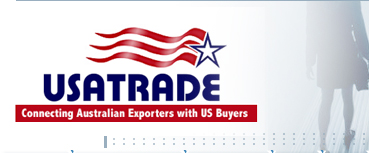

The USA is the world's richest market and Australia's single largest trade and investment partner. The US economy is over 26 times the size of the Australian market. Each of the top seven US States have economies larger than the entire Australian economy. The new Australia-United States Free Trade Agreement (AUSFTA) is a landmark agreement that gives Australian businesses expanded access to the world's largest importer and investor. Significant export opportunities have been created through the reduction of tariffs, the easing of market restrictions, and the streamlining of investment processes.
The AUSFTA offers significant opportunities to Australian ICT companies. One of the most important outcomes for the services sector is the obligation to provide ‘national treatment', that ensures that Australian firms will not be discriminated against. This means that Australian businesses will be able to compete in the US market on equal terms with their US ICT competitors, and enter the US$200 Billion US government market.
US corporate IT spending priorities include network security, enterprise application integration, web services applications, and business and technical simulation. Other opportunities exist for intelligent transportation systems, wireless applications, gaming and entertainment, and numerous niche market applications.

US federal and state government spending is accelerating. The US federal government spending on information systems and services will increase 11 per cent annually to $63 billion by 2007. Five agencies will account for nearly 70 per cent of the total federal spending on information systems and services by 2007 - the Department of Defense, the Department of the Treasury, the Department of Transportation, the Department of Justice, and NASA. Homeland security and e-government sectors are currently the highest IT priorities for federal agencies.
Being the biggest market in the world also means being the most competitive. In addition to domestic US producers, every country's exporters compete for the lucrative US market.
Given the size of the USA, successful marketing efforts frequently require deep pockets. There are also many legislative and regulatory requirements that must be met – from product labeling to product certification. So to succeed in exporting to the US market, Australian companies must be able to meet and beat the world's best in their
respective sectors. This requires a competitive advantage – in unique product and service qualities, and/or in price – and a long-term commitment to the marketing effort. Successful companies often segment the US market and match their abilities and objectives to segments that make sense for their business. Successful
exporters focus on finding niche US markets, and US distributors that match the capabilities of their Australian companies.
Sales and Marketing issues confront all companies, whether selling domestically or internationally. Unfortunately small and medium enterprises often underestimate the significant marketing dollars and deep pockets required to successfully launch a product/service, especially in the large, competitive USA. Technical, product-orientated companies are especially susceptible to being under-funded in this department, and often assume that merely producing a great product is suffice (i.e. the product will sell itself).
Developing a solid marketing plan and possessing a long-term commitment is essential. Successful selling in Australia is a pre-requisite prior to taking on new export markets, and the product or service must meet or exceed international competitive standards. An Australian exporter must clearly understand his US target customer, and be prepared to adapt the product or service to the specific requirements of this prospective client.
New exporters should be sensitive to US cross-cultural issues, should
Americanize their marketing image and message, should appreciate that large transactions are accomplished face-to-face, and not via email or fax, should protect their intellectual property, and should take advantage of Austrade resources. New exporters should appreciate subtle marketing issues such as senior US buyers preferring not to ring a 61- number at 9pm, or choosing not to visit a .au website.



